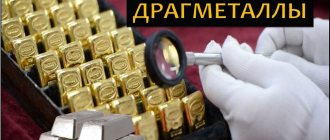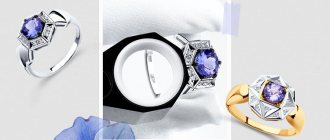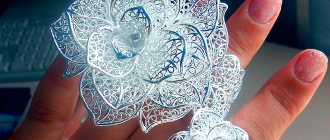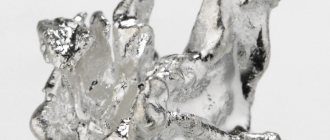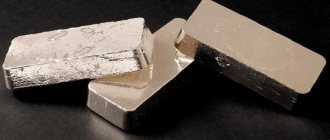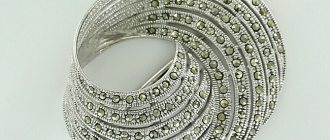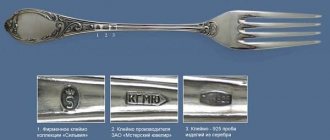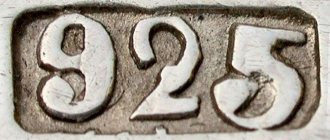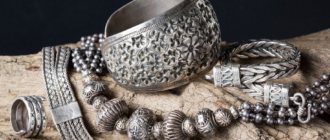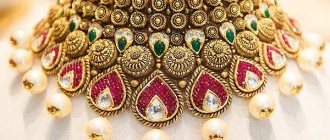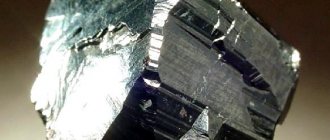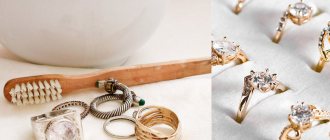For state-owned factories in the Urals, Peter the Great, by a special decree, established the Mining Chancellery, and artillery captain Tatishchev was appointed its head. He was entrusted with the responsibility of building new enterprises, training mining specialists, and continuing the exploration of ore deposits. It was Tatishchev who chose the place for the construction of the ancestor of Verkh-Isetsky - the Yekaterinburg plant - and wrote to the Berg College: I ask for permission to build a production facility with four furnaces and forty hammers. But Tatishchev quarreled with the influential industrialist Nikita Demidov and was refused. The plant was already built by Major General Gennin.
When the enterprise no longer had enough water to operate (the main engine of the machinery in that era was the water wheel), a dam was built further up the river. At first, Gennin planned to use the dam to help the Yekaterinburg plant, but there was so much water in the Verkh-Isetsky pond that he decided to build a small iron-making plant next to the dam. This is how the Verkh-Isetsky plant came into being.
Gennin christened it in honor of the daughter of Peter the Great and Catherine the First, Tsarevna Anna. Just as a daughter helps her mother, the Verkh-Isetsky plant had to help the Yekaterinburg plant. He had to work on cast iron from the Yekaterinburg plant and coal, which was delivered by assigned peasants. Primary sources say that VIZ issued the first critical iron on November 19, 1726 (in 1727 - 306 tons, in the next - 552 tons). At that time, 98 artisans and about five thousand assigned peasants worked at the plant.
In 1736, a blast furnace with two furnaces was built at the plant, and he was able to independently make cannons and cannonballs, cast iron for the production of weapons at the Olonetsky and Sestroretsky arms factories. The produced iron was sent by carts to the pier on the Chusovaya River and then by caravans of ships along the Kama to the Volga. They moved along the “water communication”, sometimes by the force of the current, sometimes by sails, sometimes by hand rowing and horse traction.
The fame of Verkh-Iset iron quickly spread beyond the borders of Russia. The secret of its high quality was that it was smelted from mixed ores: “From the mixture came such good iron that it could only be broken off through great strength and labor.” Five years later, the state not only returned the costs of building the dam, but also received “a net profit of 58,313 rubles 01.1/4 kopecks.”
In private hands
In 1758, VIZ became the first private plant in Yekaterinburg: by decree of the Berg College, it was transferred into the ownership of Count Roman Vorontsov. Vorontsov was the most influential figure at the court of Peter the Third: his daughter Catherine was the emperor’s favorite. Under Vorontsov, a factory pier was built at the confluence of the Treka and Chusovaya rivers, from which a caravan of Kolomenka ships with factory products departed every spring. After the overthrow of Peter, the count, nicknamed “Roman Big Pocket” for bribery, was arrested, deprived of his estates and deported to Moscow.
In 1774, Vorontsov sold the plant to St. Petersburg millionaire Savva Yakovlev (in total, Yakovlev bought and built 22 factories during his life). The enterprise went to the new owner along with the lands for 200 thousand rubles. This happened at a difficult moment for the plant: a considerable part of its workers then joined Emelyan Pugachev.
The visa logo of the 19th century - the stamp “A.Ya.Siberia” with the image of a sable - was familiar to the whole world
The Yakovlev dynasty held the plant for 144 years. They became the heyday of the enterprise. The plant was three years younger than Yekaterinburg, developed as a separate city and in many ways surpassed its older brother. Judge for yourself: the first pleasure boat, the first velodrome, the first football fields, the first hippodrome, the first folk theater, a model hospital with a pharmacy and a huge pathological-anatomical collection, churches, schools, a fire department, an almshouse, an orphanage and even a temperance society.
The talented architect Mikhail Malakhov designed the Main Factory Office with an almost Admiralty spire, a dam, and a decorated workshop colonnade. The ensemble of industrial architecture in the style of Russian classicism created at VIZ became the largest in Europe. Newspapers of that time about. Emperor Alexander the First, who visited Yekaterinburg in 1824, personally forged a nail on a VIZ.
This period of VIZ development is also associated with the arrival of engineer Grigory Zotov, one of the most famous characters in Ural industrial history. It is little known, but it is a fact: the artistic traditions of shaped iron casting were founded at VIZ. Zotov was the first to attempt to produce decorative items of “small plastic”: animal figurines, boxes, candlesticks. 27 years later, this experience, introduced by Zotov along with German technologies at the Kasli plant, became the basis for the development of a unique artistic craft in the Urals. Office chairs, tables and chairs, and furniture fittings were cast from cast iron, copper and bronze according to European models.
How to tell if a spoon is silver
Silver is a precious metal, which means that all products made from it are subject to hallmarking. In addition to the required image, the mark contains numbers reflecting the percentage of metal content.
Nowadays three-digit hallmark designations are accepted, but in tsarist Russia they were two-digit. And the brand looked completely different.
Pure silver is used exclusively for technical purposes. In the production of jewelry and decorative items, as well as cutlery, silver is used with additives that give it strength.
The most popular additives for silver are copper and nickel. This is why silverware often has a yellowish tint - these are traces of copper. The higher the sample, the less noticeable this yellowness is.
Set of silver teaspoons
So factory-made silverware is always hallmarked, but there is still a risk of running into a fake - craftsmen have learned to falsify even standard hallmarks. However, silver is supplied with fake hallmarks much less often than gold (simply unprofitable), and the quality of the imprint itself leaves much to be desired.
If there is no mark on the product or you doubt its origin, you can check the silverware for authenticity using homemade methods:
- Chalk. Run a regular chalk across the surface of the silver - a dark mark will remain on the white mineral. True, some other metals (for example, tin) demonstrate a similar reaction, so this test is not very informative.
- Sulfur ointment. Sulfur is the worst enemy of silver: upon contact with it, the noble metal is covered with a dark layer of sulfide. Apply sulfur ointment to a small, inconspicuous area, wait 10-15 minutes and watch the metal react.
- Lapis pencil. The ancient styptic can be used to test gold and silver. It contains silver nitrate, and it does not leave the slightest trace on precious metals.
- Iodine. But silver reacts to iodine - dark spots remain. If the spots are a different color or there is no reaction at all, then this means that this is a fake. The only disadvantage of this method is that it is difficult to remove a dark stain from silver later.
- Ice. Silver has high thermal conductivity: a piece of ice placed in a spoon will begin to melt rapidly. To compare the result, it is advisable to simultaneously perform a similar experiment with a guaranteed non-silver spoon.
If you want to get a perfectly accurate result, buy a special test at a jewelry store. It is inexpensive, but allows you to instantly resolve doubts about the “pedigree” of the product.
The methods described above are relatively good, but there are a lot of nuances that reduce the accuracy of testing.
To begin with, in most cases we do not test the entire product, but its surface, so a silver-plated spoon will test positive for silver. The only way to get to the truth is to scratch deep into the surface and test there. By the way, silver-plated products are not branded!
The second nuance is rhodium-plated (that is, rhodium-plated) silver. Rhodium-plated silver does not darken over time, has an elegant shine and demonstrates much greater strength. There will be a factory mark on it, but the rhodium-plated surface, naturally, will not give a positive reaction to silver.
How much does a silver table spoon weigh?
Silver is a dense and, accordingly, heavy metal. A silver tablespoon will be much heavier than a steel one, and even more so an aluminum one. True, cupronickel cannot be called light either.
The weight of a modern silver tablespoon ranges from 55-95 grams, but antique cutlery can be even heavier.
Weight of a silver teaspoon
Even a miniature silver spoon feels good in the hand. The standard weight of such a device is 25-40 grams.
For babies, “for the first tooth” they usually take even lighter spoons weighing 12-20 grams. If you want to follow the tradition, but do not intend to feed your child from a silver spoon, you can purchase its stylization in the form of a pendant.
First in the world
At the beginning of the 19th century, a new product brought the plant worldwide fame - roofing iron sheets. It was bought by England, France, America and their colonies. At least 300 thousand pounds of products were exported to America alone every year. The roofs of the London Parliament and Notre Dame Cathedral were covered with “Visa” iron. In the trading world, Verkh-Iset iron was known as “Yakovlevsky”, had the stamp “A.Ya.Sibir” with the image of a sable and was highly valued for its excellent qualities: it was smooth, glossy, did not require painting, “stood on the roof for a hundred years” . After the fire of 1812 in Moscow, it was placed on all the roofs of the affected city.
In 1863, a mechanical factory was built at the plant for the production of steam engines - this is how the Verkh-Isetsky plant acquired the profile of not only rolling, but also machine-building production. In addition to steam engines, boilers and ore lifts, equipment for the gold panning industry, and by the end of the century, for the railway industry were also produced.
In 1914, for the first time in Russia, VIZ began the industrial production of electrical dynamite steel. This experience anticipated a new stage in the development of the old plant... But first it had to survive the revolution of 1917 and the subsequent civil war. Valuable equipment, machines and tools were taken away, and the workshops fell into disrepair. There was even an attempt to destroy the dam (dynamite was found in its structures), but the workers managed to prevent an explosion.
The plant was nationalized, it received the name “Red Roof”. According to the plan of the first Soviet five-year plan, VIZ was chosen for the development of new products - hot-rolled electrical transformer steel. And in 1929, the company produced the first batch. The Pravda newspaper wrote: “A model transformer for MOGES has been produced using exclusively Soviet materials. VIZ, a veteran of Russian metallurgy, was the first to join the fight for the liberation of the Union from import dependence.” It took Germany 30 years to master the production of high-quality transformer metal; VIZ took less than five. Since 1934, it has fully provided the domestic industry with hot-rolled electrical steel, which surpasses world standards in quality. Thus, the world fame of the products of the Verkh-Isetsky plant was revived with a new trademark - VIZ. Visa workers deciphered this abbreviation as “World Famous Plant”. The trademark, reminiscent of the bend of a steel strip and symbolizing the passage of metal through rolls, remains a recognizable brand today.
In 1931, a scientific laboratory was created at VIZ - the first in the USSR at an industrial enterprise. For a long time it was the only research base in the country for innovations in the production of electrical steels and contributed to a breakthrough in a number of sectors of the economy. Thus, a vacuum electric furnace designed in 1940 at VIZ made it possible to obtain transformer metal with exceptional magnetic properties.
How to distinguish a silver spoon from a cupronickel spoon
Cupronickel is an alloy of copper and nickel, that is, the same metals that are usually added to silver-based jewelry alloys. It has been known almost since the beginning of our era, but it began to be actively used for the production of cutlery relatively recently, about 150 years ago.
Mark on a cupronickel spoon
In Soviet times, cupronickel cutlery was very popular and was the pride of middle-income families. They were traditionally marked with the mark “MELCH”. But there are other analogues of silver: Monel (“MN”, cupronickel with a high nickel content), nickel silver (“MNTs”, with the addition of zinc), silver-plated brass, and so on.
It is quite difficult to distinguish silver from nickel silver on cutlery at home, especially if there is no factory mark. You can scratch the product: a dark mark will remain on cupronickel, and a light mark will remain on silver, the metal’s own shade. But it is better to use the jewelry tests already mentioned above.
New frontiers
By the beginning of the Great Patriotic War, about 6 thousand people worked at the Verkh-Isetsky plant - and two thousand went to the front. The production of transformer and dynamic steel had to be stopped - the country needed other products. In the shortest possible time, VIZ mastered the production of more than one hundred grades of military special steels. Already in the winter of 1941, the plant was pouring metal for tanks, airplanes, machine guns and military telephones. Two thousand mines, more than a thousand grenades, and a quarter of a thousand shells came out of the workshops per day. In the mechanical shop they started producing parts for the guards' mortars - the legendary Katyushas, and in the sheet metal shop they processed silver for the production of orders and medals. In 1942, for exemplary fulfillment of government tasks, the Verkh-Isetsky plant was awarded the Order of the Red Banner of Labor. Two visa holders were awarded the title of Hero of the Soviet Union: Yakov Tkachenko and Grigory Rechkalov (twice).
In peacetime, VIZ increased the volume of metal produced tens of times. A wide scientific and technical search was underway at the plant. In 1947, conventional duo-mills produced particularly thin (0.1 mm) transformer steel, which in the West was produced only by cold rolling. As a result, the first domestic Luch televisions appeared. In the 50s, VIZ became a pioneer in introducing the method of high-temperature annealing in a vacuum, which made it possible to improve the electromagnetic properties of transformer steel by 30–40%. But the most important achievement of that time was the development of the production of cold-rolled electrical steel.
The decision to build a cold rolling shop complex at VIZ was made in 1961, and construction began in 1966. Over the course of seven years, 65 buildings and structures were erected; as a result, the Central Chemical Processing Plant turned out to be larger than the plant itself. On September 30, 1973, on the occasion of the 250th anniversary of Yekaterinburg, the first stage was commissioned, and VIZ began producing cold-rolled transformer steel. In 1976, the plant was awarded the Order of the October Revolution, thus becoming twice awarded the order. In 1978, he was the first in the country to master the production of cold-rolled dynamite steel. The Central Chemical Processing Plant is still the largest complex in Europe; the design capacity for producing electrical steel is 250 - 280 thousand tons per year. Since the beginning of its operation, the Central Chemical Processing Plant has produced more than 7 million tons of metal.
VIZ-Steel LLC continues the legendary history of VIZ today (see interview with General Director Sergei Makurov, p. 29) and its subsidiary OJSC Verkh-Isetsky Plant, which produces metal products for consumer consumption. Created in 1998 on the basis of the complex, the Central Chemical Processing Plant occupies about 10% of the world market for the production of transformer steel - it is one of the five leading global manufacturers of products of high technological complexity (80% of products are exported to 50 countries of the world). The complex includes a gas shop and an industrial wastewater treatment shop operating through a closed water supply system. It is significant that the pollutants discharged by VIZ-Steel into water bodies account for only 0.1% of the mass of pollutants discharged by city enterprises.
In 2006, VIZ-Steel became part of the NLMK Group and, thanks to this, is implementing a large-scale program of technical re-equipment of production: by 2014, half of the existing equipment will be updated. At sites in Lipetsk and Yekaterinburg, technology for the industrial production of high-permeability steel is being developed for the production of highly economical, energy-saving high-power power transformers.
Markings on spoons
Modern industry does not produce devices from precious metals for mass consumption due to their fragile structure and high cost. To improve the quality and increase the service life of products, various metal alloys are used, giving an external resemblance to gold or silver.
High-quality tableware is indicated by markings, thanks to which you can determine the alloy material used to make the product. Domestic manufacturers, when minting a mark on a spoon, use the following designations in marking:
- MELCH (MN) – cupronickel alloy;
- MNC – analogue of cupronickel – nickel silver;
- AL – aluminum;
- STAINLESS – made of stainless steel.
Some devices are covered with a thin layer of precious metal on top. In this case, a double mark is applied, which includes an indication of the sample number. Silver spoons are marked using the numbers 925.
Many buyers confuse nickel silver devices with nickel silver alloy, which is explained by the high degree of external similarity of the materials. Their difference is that by adding manganese, a cupronickel silver product is obtained, and nickel silver is an alloy that includes zinc. The basic basis of both materials is the same - it is copper with nickel. Having studied the markings, the buyer will be able to find out the composition of the MNC alloy on the spoon, what it is, and how much such spoons cost.
Glorious for dynasties
VIZ's place as a leader in metallurgy was helped and maintained by people - fifteen generations of factory workers. Over almost three centuries, more than a hundred working dynasties have formed at the plant. Representatives of the famous Kabalin-Shchipanov dynasty worked at the plant for a total of over four hundred years. The total length of service of the Chukleyev, Kashevarov-Ivanov, Koshelev, Stafeev dynasties is more than a century.
What does MNC mean on cutlery?
Many people are interested in what the abbreviation MNC means, minted on tableware. Such a mark on a spoon or other device stands for copper-nickel-zinc. This alloy is called nickel silver. The use of zinc, in addition to the attractive appearance and practicality of the product, is characterized by a reduction in the cost of production. Translated from English, the name of this alloy means “new silver”.
Devices made of nickel silver in its pure form have an unpleasant metallic taste and smell. Therefore, they are coated with silver or gold plating with a thickness of at least 0.5 micrometers.
In accordance with GOST, the designation on sets of silverware is provided if the coating layer is at least:
Devices with gold or silver plating are an excellent gift for any person, regardless of age or gender, social status, or religion. Such gifts are given in the following cases:
- infant baptism;
- entering a university or obtaining a diploma;
- conclusion of a marriage;
- birth of the first child;
- silver or golden wedding anniversary;
- anniversaries and other celebrations.
It has long been believed that a donated silver spoon will bring:
- newlyweds - a long, happy life in love and harmony;
- students – successful mastery of science;
- babies - strong and healthy teeth.
Giving a fork as a gift was considered a bad sign, prophesying future misfortunes.
Visa innovators
The ingenuity and talent of the craftsmen gave the plant the glory of a pioneer. At the beginning of the Patriotic War of 1812, the Verkh-Isetsky plant received a complex government order for the production of artillery shells. But entire batches of cast ammunition were rejected due to poor polishing. Then the factory craftsmen created a special machine “for bringing the cannonballs into caliber”: it gave the projectiles “the smoothest roundness with the best comfort.” The innovation was “ordered to be applied to all Russian factories.” The contribution of the factory workers to the victory of Russian artillery over the “hordes of Napoleon” was awarded a gold medal.
Another factory invention, the movable cylindrical screen or dredge, replaced the manual labor of gold miners.
The Berg College also awarded a gold medal “For Useful” to a new, similar to rolling, method of iron production for producing the first sheets of metal in Russia up to two meters in length and about a meter in width.
Many innovative ideas that were successfully tested at the plant did not receive official status. Thus, the first steam engine in the Urals and one of the first in the country worked at the plant for two years. Mechanic Afanasy Vyatkin assembled it back in 1815 at his own risk without permission from the authorities.
PHOTO CATALOG OF STAMPS OF GOLD AND SILVER MASTERS OF THE RUSSIAN EMPIRE
Beautiful cutlery has always been in demand, they were presented as a gift or simply bought for use in the household. Setting the table with gold or silver forks, spoons and knives is considered good manners, but not every housewife can afford such luxury. Many people purchase cupronickel silver cutlery or nickel silver items, which are difficult to distinguish from silver ones. Taking a closer look, you can see the MNC marking on the spoon - not every user knows what it is and how much such spoons cost. This article will help you understand the term; you should start with why cutlery is “branded” in general.
How does MNC alloy differ from silver?
If you do not take into account the MSC mark, it is difficult for the average person to distinguish silver-plated devices from real silver. Below is a comparison table that will help you understand the main characteristics of the products.
| Characteristics | Silver cutlery | Products made from MNC alloy |
| Appearance | Silver or white color. | Silver or white color. |
| Strength | Fragile, easily bent and deformed. | Quite durable, resistant to physical impact and deformation. |
| Weight | Very heavy. | Lightweight. |
| Physical | Reflects light well; darken over time, heat up quickly, and are characterized by high electrical conductivity. | They do not fade or darken for a long time. They are characterized by weak thermal and electrical conductivity. Resistant to corrosion. |
| Reaction with iodine | They will darken. | Spots will appear. |
| With strong friction | No physical changes are observed, but a characteristic ringing sound appears. | Change in color, appearance of characteristic spots. Accompanied by a copper smell. |
By carrying out the proposed simple manipulations, you can reliably establish whether the device is made of silver or a nickel silver alloy. If you cannot find out the material of the product experimentally, you need to contact a jewelry workshop, where a specialist will quickly determine the composition.
It is impossible to scratch a silver product with a sharp object; marks with a characteristic brown or red tint remain on nickel silver.
There is an opinion that tableware made of nickel silver or cupronickel has a detrimental effect on health. To understand how true this is, it is necessary to clarify how each of the components individually affects the physiological functions of the human body:
- Nickel – accumulates in the pancreas and thyroid gland, enhancing the positive effect of insulin and maintaining low sugar levels. Microelement ions react with vitamin C, helping to increase the intensity of the oxidative process and accelerating the function of enzyme production. The accumulation of nickel in the body has a beneficial effect on the condition of hypertensive patients, keeping blood pressure normal.
- Copper is a vital element for humans, a deficiency or excess of which has a detrimental effect on health. The substance regulates the production of a huge number of enzymes and has an antibacterial effect.
When studying experimentally the effects of nickel silver alloy on the human body, it was found that with regular use of the specified tableware, youth and healthy skin are preserved for a long time, general tone and resistance to infectious diseases increase.
But if the integrity of the coating is damaged and characteristic scratches appear, cutlery made from the MNC alloy should be removed from use. A large intake of zinc into the human body can cause an allergic reaction. Heated copper is toxic and gives food a metallic taste. An excess of this metal in the body leads to poisoning.
Nickel silver alloy is used not only for cutlery. It has found wide application in the jewelry industry - for the manufacture of jewelry and accessories that are not inferior in appearance to silver. In addition, this alloy is used to make:
- medical devices and instruments;
- precision measuring instruments;
- automation for steam and water boiler units;
- electrical parts and microcircuits;
- various types of wire rod;
- decoration elements for paintings and much more.
